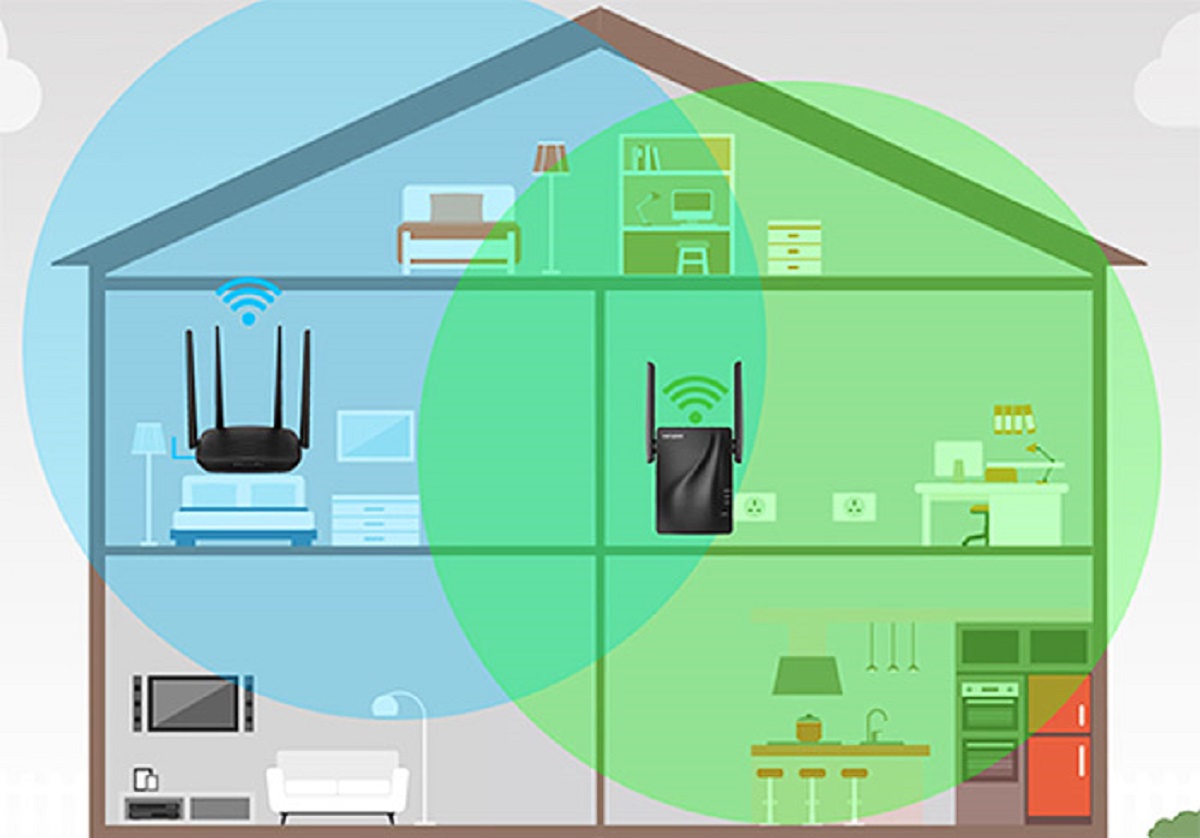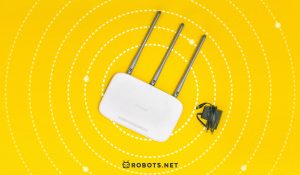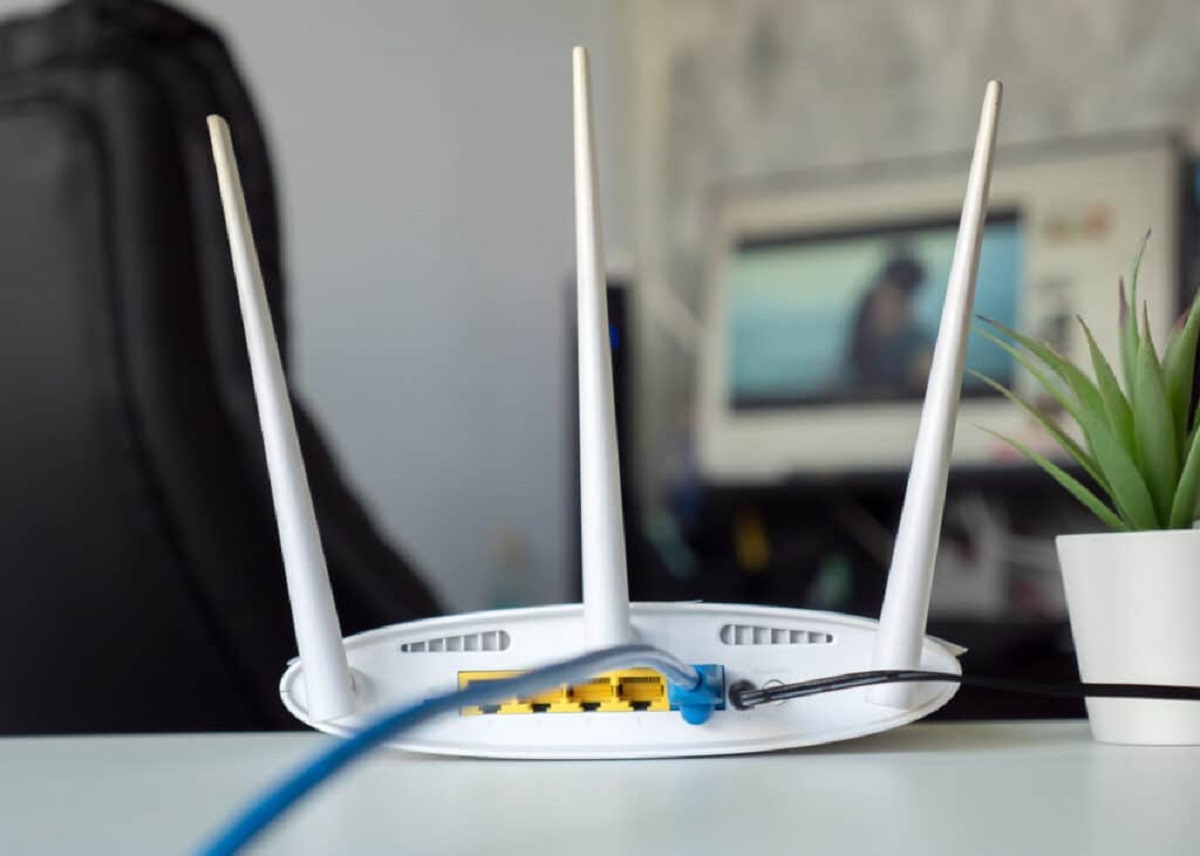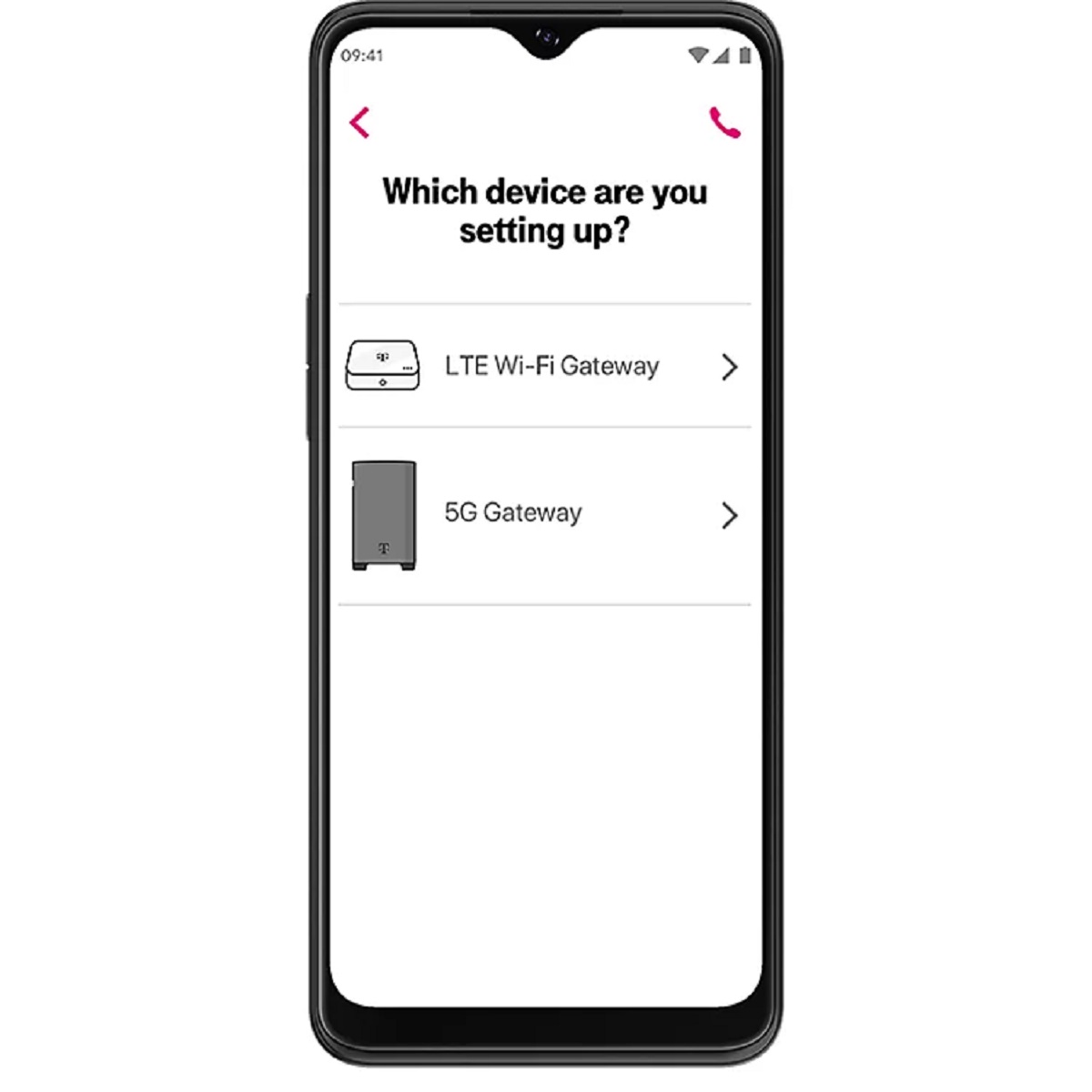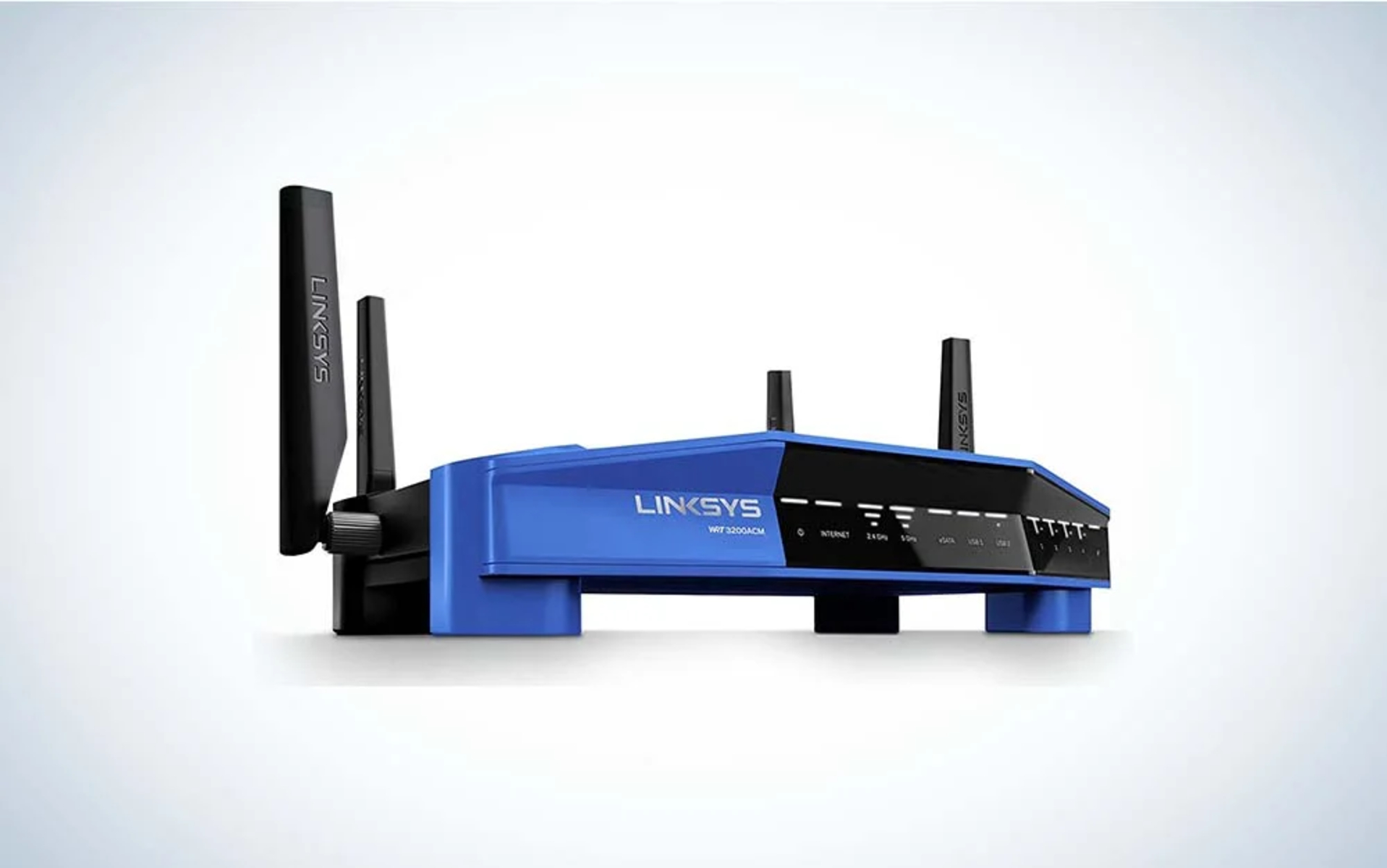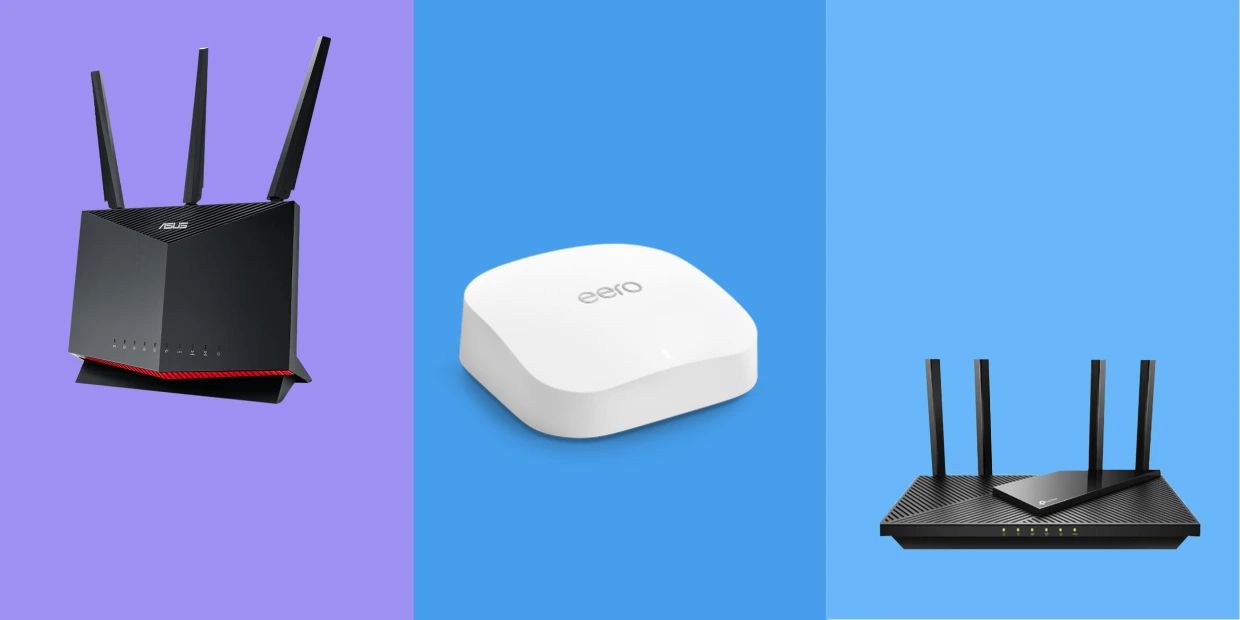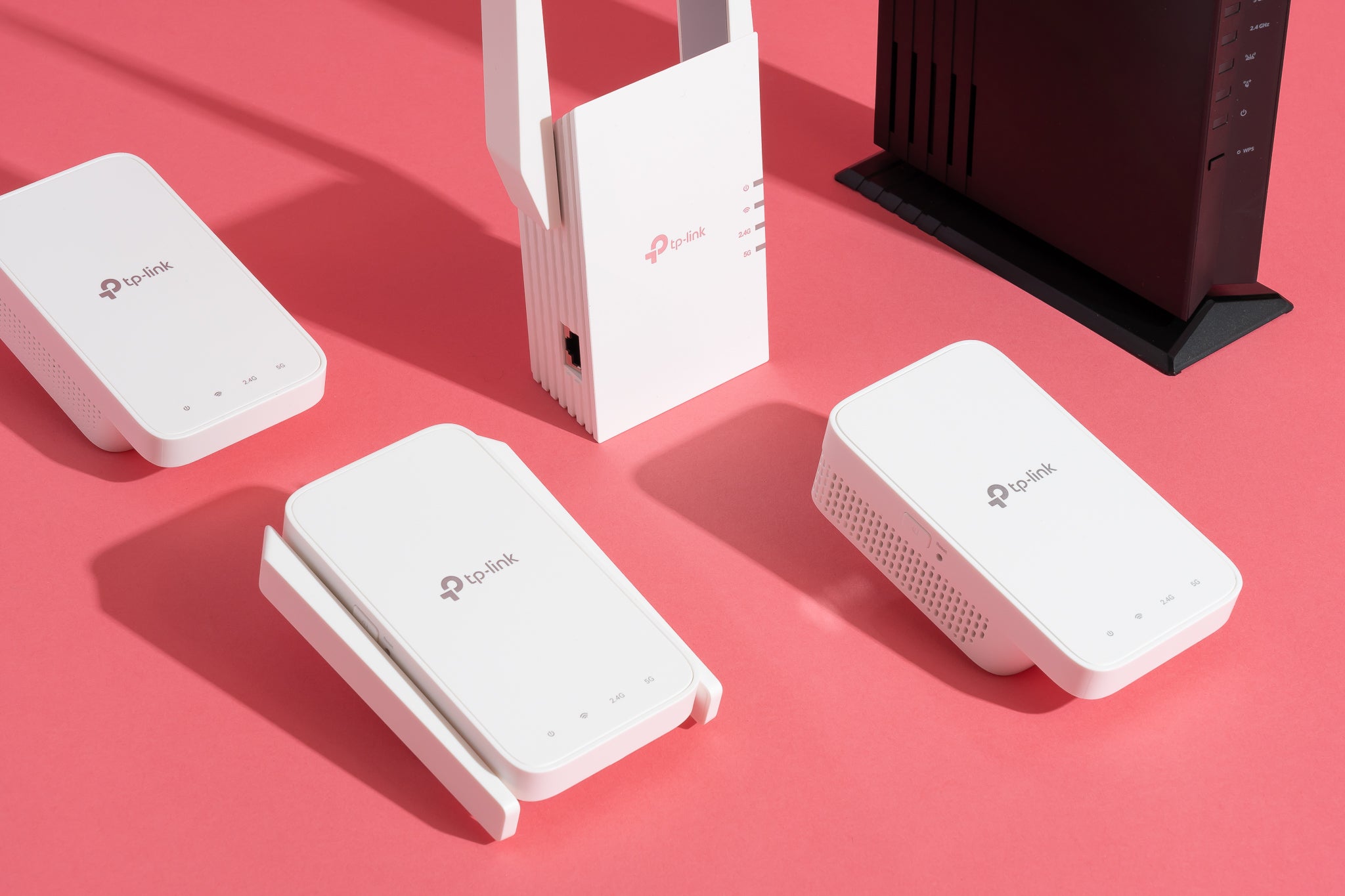Introduction
Welcome to our guide on where to put a WiFi extender! If you’re experiencing weak or spotty WiFi coverage in certain areas of your home or office, a WiFi extender can help boost the signal and extend the range of your wireless network. However, placing the extender in the right location is crucial to ensure optimal performance and coverage. In this article, we will discuss various factors to consider when deciding where to place your WiFi extender.
When it comes to WiFi extenders, proper placement is key. The goal is to find the sweet spot where the extender can effectively receive the existing WiFi signal from your router and then amplify it to cover the areas that are experiencing weak signal or dead zones. Factors such as the layout of your space, the location of your router, and potential interference from other devices can all impact the placement of your extender.
Before we dive into the different placement options for your WiFi extender, it’s important to understand your current WiFi coverage. Take a walk around your home or office and identify the areas where the WiFi signal is weak or non-existent. These areas, commonly referred to as dead zones, are where you’ll want to focus your efforts when deciding where to place your extender.
Now that you have a better understanding of the importance of WiFi extender placement and have identified the areas with weak or no signal, let’s explore the different placement options to maximize the effectiveness of your WiFi extender.
Factors to Consider
When deciding where to place your WiFi extender, there are several factors to keep in mind to ensure optimal performance and coverage. Let’s explore these factors:
- Distance from the Router: The distance between your WiFi extender and your router can affect the signal strength and performance. Ideally, the extender should be placed within a reasonable range of the router for seamless communication.
- Physical Obstacles: Walls, floors, and other physical obstacles can hinder WiFi signal transmission. Keep these obstacles in mind when determining the placement of your WiFi extender, as you may need to position it in a way that minimizes the impact of these obstructions.
- Electrical Outlets: WiFi extenders typically need to be plugged into electrical outlets. Consider the location of available outlets when deciding where to place the extender. It’s important to choose an outlet that is in close proximity to both the router and the areas with weak WiFi coverage.
- Interference: Other electronic devices, such as cordless phones, baby monitors, and microwave ovens, can interfere with WiFi signals. Avoid placing your WiFi extender near these devices to minimize interference and ensure a strong and stable connection.
- Signal Strength: Before settling on a placement location, test the signal strength in different areas of your home or office using a WiFi signal analyzer app or tool. This will help you identify the areas with the weakest signal and guide your placement decision.
- WiFi Network Band: Consider the WiFi network band supported by your extender. Dual-band extenders operate on both 2.4GHz and 5GHz frequencies, offering greater flexibility and compatibility with various devices. If you have a dual-band extender, take this into account when deciding where to place it for optimum coverage.
By considering these factors, you can make an informed decision about the placement of your WiFi extender and ensure that it effectively amplifies the signal in the areas where you need it the most.
Understanding Your Current WiFi Coverage
Before delving into the placement options for your WiFi extender, it’s vital to have a clear understanding of your current WiFi coverage. This will help you identify the areas that require a signal boost and guide you in placing the extender for maximum effectiveness.
First, take a walk around your home or office and determine which areas have weak WiFi signal or no signal at all. These areas are commonly known as dead zones, and they are where you’ll want to focus your efforts.
One way to assess your WiFi coverage is by simply testing the signal strength on your mobile device as you move around your space. This will give you a general idea of where the signal weakens or drops completely.
An alternate method is to use a WiFi analyzer app or tool. These tools provide more detailed information about the signal strength, signal interference, and the channels being used by different WiFi networks in the vicinity. They can help you identify specific areas with poor signal strength and aid in determining the best placement for your WiFi extender.
Additionally, consider the layout of your space and any potential physical obstructions that may affect WiFi signal transmission. Walls, floors, and large furniture can obstruct the signal, resulting in weaker coverage in certain areas.
By understanding your current WiFi coverage, you’ll be equipped with the knowledge needed to strategically place your WiFi extender and extend the signal to areas that need it most. This understanding will help you make informed decisions and optimize your WiFi network’s performance.
Placement Options for WiFi Extender
When it comes to placing your WiFi extender, there are several options to consider. The ideal placement will depend on the layout of your space, the location of your router, and the areas that need stronger WiFi coverage. Let’s explore some common placement options:
- Near the Router: Placing the WiFi extender near the router is a popular choice, especially if the weak areas are in close proximity to the router. This placement ensures that the extender can receive a strong WiFi signal and effectively amplify it to cover the nearby areas. However, keep in mind that the extender still needs to be within a reasonable range of the devices in the weak signal zones.
- Near the Dead Zones: Another option is to position the WiFi extender in or near the areas with weak or no signal. This ensures that the extender is as close as possible to the devices in those areas, improving the signal strength. By placing the extender strategically within the dead zones, you’ll be able to eliminate the weak signal areas and enjoy better WiFi coverage.
- In-Between the Router and Dead Zones: If the weak signal areas are located in a specific part of your space, consider placing the WiFi extender somewhere in between the router and those areas. This allows the extender to pick up the existing WiFi signal from the router and extend it to the dead zones. Experiment with different placements in this middle ground to find the optimal position for your extender.
- Avoiding Interference: It’s important to avoid placing the WiFi extender near devices that can cause interference, such as cordless phones, microwave ovens, or thick walls. These devices can disrupt the signal and hinder the performance of your extender. Ensure that there is enough distance between the extender and potential sources of interference for the best results.
Remember, each space is unique, so you may need to experiment with different placement options to find the configuration that works best for your environment. In some cases, deploying multiple extenders strategically throughout your space may be necessary to achieve comprehensive coverage.
By exploring these placement options, you can determine the most effective position for your WiFi extender and significantly improve your WiFi coverage in the areas that matter most to you.
Near the Router
One of the common placement options for a WiFi extender is to position it near the router. This approach is particularly effective when the areas with weak WiFi coverage are in close proximity to the router. Placing the extender near the router ensures that it can receive a strong WiFi signal and amplify it to cover the nearby areas.
By positioning the WiFi extender near the router, you can take advantage of the strong signal coming from the router and extend it to the areas with weaker coverage. This placement option is suitable for scenarios where the dead zones are limited to a specific part of your space or if you want to boost the signal in rooms adjacent to the router.
When placing the extender near the router, it’s important to ensure that the extender is still within a reasonable range of the devices in the weak signal zones. This will enable the amplified signal to reach the devices in need of better WiFi coverage. Keep in mind that the range of the extender may vary depending on the model and manufacturer, so it’s best to consult the product documentation for specific recommendations.
It’s worth noting that even when placing the WiFi extender near the router, the extender itself should ideally be located in an area with minimal physical obstructions. Walls, furniture, or other obstacles can obstruct the signal transmission between the extender and the devices in need of improved coverage. Therefore, consider the layout of your space and choose a placement location that minimizes these obstructions.
Placing the WiFi extender near the router is a convenient option, as it allows for easy setup and configuration. By taking advantage of the strong WiFi signal from the router, you can quickly extend the coverage to areas in close proximity. If your WiFi dead zones are located near the router, this placement option is definitely worth considering.
Near the Dead Zones
If you want to target the specific areas with weak or no WiFi signal, placing the WiFi extender near the dead zones is a highly effective option. By positioning the extender in or near these areas, you can ensure that it is as close as possible to the devices needing a stronger WiFi signal.
By placing the WiFi extender near the dead zones, you can eliminate the weak signal areas and provide a significant boost to the WiFi coverage in those specific locations. This placement option works particularly well when the dead zones are concentrated in specific rooms or corners of your space.
To determine the optimal placement near the dead zones, start by identifying the exact spots where the WiFi signal is weak or non-existent. These areas can be identified by testing the signal strength using a WiFi analyzer app or simply by observing where your devices struggle to maintain a stable connection.
Once you have identified the dead zones, position the WiFi extender in a location nearby. Ideally, choose a spot where the extender can receive a reasonable WiFi signal from the router while still being in close proximity to the devices in need of better coverage.
It’s important to note that the placement near the dead zones should still consider potential physical obstructions that may block or diminish the WiFi signal. Walls, furniture, or other obstacles can impact the extender’s ability to effectively amplify the signal. Position the extender in a location that minimizes these obstructions and allows for maximum signal transmission to the devices in the specific dead zones.
Placing the WiFi extender near the dead zones is an excellent approach to improving WiFi coverage in your space. By strategically positioning the extender based on the areas with weak signal, you can eliminate the dead zones and enjoy a strong and stable connection throughout your environment.
In-Between the Router and Dead Zones
When the dead zones in your space are not limited to a specific area but rather spread throughout, positioning the WiFi extender in-between the router and the dead zones can be a practical and effective placement option. This approach allows the extender to pick up the existing WiFi signal from the router and extend it to the areas experiencing weak coverage.
By placing the WiFi extender in-between the router and dead zones, you can create a wireless bridge that fills the gaps in WiFi coverage. The extender acts as a relay, receiving the WiFi signal from the router and amplifying it to reach the devices in the weak signal areas.
To find the optimal placement for the extender in-between the router and dead zones, it’s important to consider the layout of your space. Take into account any physical obstructions that may hinder the WiFi signal transmission and choose a location that minimizes these obstacles.
Experiment with different positions to find the sweet spot where the extender can effectively bridge the gap between the router and the dead zones. Ideally, the extender should be placed in an area that provides strong connectivity to both the router and the devices in need of better WiFi coverage.
Keep in mind that the distance between the extender and the router still matters, as the extender needs to maintain a stable and robust connection with the router to ensure optimal performance. Additionally, consider factors like interference from other devices and potential signal degradation caused by walls or other physical barriers.
Placing the WiFi extender in-between the router and the dead zones is an effective way to extend the WiFi coverage throughout your space. By strategically positioning the extender, you can bridge the gap and provide a strong and reliable connection to the areas that were previously experiencing weak signal or dead zones.
Avoiding Interference
When placing your WiFi extender, it’s crucial to consider potential sources of interference that can disrupt the WiFi signal. By avoiding interference, you can ensure a strong and stable connection between the extender and your devices. Here are some tips to help you minimize interference:
1. Positioning the Extender: Avoid placing the WiFi extender near devices that can cause interference, such as cordless phones, microwave ovens, or thick walls. These devices emit signals that can disrupt the WiFi signal transmission and degrade the performance of your extender. Ensure that there is enough distance between the extender and potential sources of interference.
2. Analysing WiFi Channels: Check the WiFi channels used by neighboring networks to prevent interference. Ideally, choose a WiFi channel that is less crowded and has minimal overlap with other networks. WiFi analyzer apps or tools can help you identify the best channel for your extender.
3. Utilizing Dual-Band Extenders: Consider using a dual-band extender that operates on both the 2.4GHz and 5GHz frequencies. Dual-band extenders can provide better performance and flexibility, as they allow you to switch between less crowded frequency bands to avoid interference from other devices. This is particularly useful in environments with multiple WiFi networks or devices.
4. Properly Configuring Network Settings: Make sure to enable features like Quality of Service (QoS) on your router and extender. QoS can prioritize specific devices or traffic types to ensure that important applications, such as video streaming or online gaming, receive a higher priority and a smoother connection.
5. Updating Firmware: Regularly updating the firmware of your WiFi extender can improve performance and address any known issues or vulnerabilities. Check the manufacturer’s website for firmware updates and follow the instructions to keep your extender up to date.
6. Regular Network Maintenance: Regularly check for any potential sources of interference in your environment, such as new appliances or devices that may have been introduced. By staying vigilant, you can quickly identify and address any interference issues to maintain optimal WiFi performance.
By actively avoiding interference, you can enhance the performance of your WiFi extender and enjoy reliable and uninterrupted WiFi coverage. Take the necessary steps to minimize interference, adjust your extender’s placement, and optimize your network settings for a seamless and high-quality WiFi experience.
Considerations for Dual-Band Extenders
When choosing a WiFi extender, one important consideration is whether to opt for a dual-band extender. Dual-band extenders have the advantage of operating on both the 2.4GHz and 5GHz frequencies, offering greater flexibility and compatibility with various devices. Here are some factors to consider when deciding on a dual-band extender:
1. Frequency Band Selection: Dual-band extenders give you the option to choose between the 2.4GHz and 5GHz bands, depending on your specific needs. The 2.4GHz band offers wider coverage and works better at penetrating walls, making it suitable for general web browsing and email. The 5GHz band provides faster speeds but has a shorter range, making it ideal for bandwidth-intensive activities like streaming, gaming, and video conferencing.
2. Device Compatibility: Check the compatibility of your devices with dual-band technology. While most modern devices support both 2.4GHz and 5GHz bands, older devices may only support the 2.4GHz band. Ensure that the devices you want to connect to the extender are compatible with the frequency bands offered by the dual-band extender.
3. Band Steering: Some dual-band extenders offer a feature called “band steering.” This feature automatically directs devices to the appropriate band based on their capabilities and network conditions. Band steering helps optimize performance by ensuring devices are connected to the band that can provide the best possible speed and coverage.
4. Network Congestion: In areas where there are many WiFi networks, the 2.4GHz band can suffer from congestion and interference. Dual-band extenders allow you to migrate some devices to the less crowded 5GHz band, resulting in improved performance and reduced interference from neighboring networks.
5. Advanced Configuration: Dual-band extenders often come with advanced configuration options, allowing you to configure separate SSIDs (network names) for each frequency band. This can be useful if you want better control over which devices connect to which band or if you prefer to keep specific devices isolated to a particular band.
In summary, dual-band extenders provide the flexibility to choose between different frequency bands based on your specific requirements. They offer compatibility with a wide range of devices and can better handle network congestion. Consider the device compatibility, network needs, and advanced configuration options when deciding whether a dual-band extender is the right choice for you.
Conclusion
When it comes to improving your WiFi coverage, finding the right placement for your WiFi extender is key. By considering factors such as distance from the router, physical obstacles, and potential interference, you can strategically position your extender to maximize its effectiveness.
Understanding your current WiFi coverage and identifying the areas with weak or no signal is crucial in determining where to place your extender. This knowledge allows you to target those areas and extend the WiFi signal to provide better coverage for your devices.
There are several placement options to consider, including placing the extender near the router, near the dead zones, or in-between the router and dead zones. Each placement option offers its own advantages depending on your specific needs and space layout.
Additionally, take steps to avoid interference by positioning the extender away from devices that can cause signal disruption and selecting appropriate WiFi channels. Considering a dual-band extender can provide even more flexibility, as it allows you to utilize both the 2.4GHz and 5GHz frequency bands and optimize performance.
Remember to regularly evaluate your WiFi network and make any necessary adjustments to ensure optimal coverage and performance. Regularly check for firmware updates for your extender and take steps to minimize interference sources in your environment.
By implementing these considerations and finding the ideal placement for your WiFi extender, you can significantly improve your WiFi coverage, eliminate dead zones, and enjoy a seamless and reliable wireless experience throughout your space.







